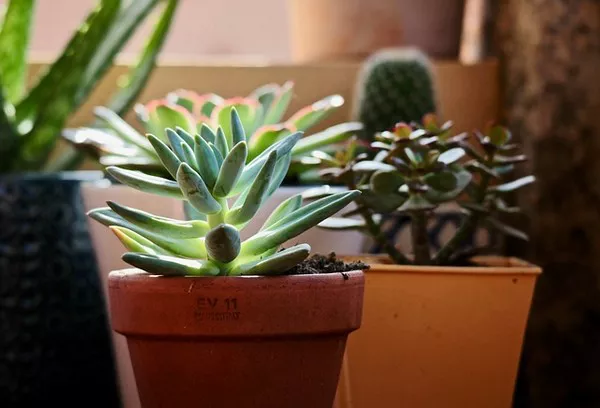Succulent plants have captivated gardening enthusiasts and interior decorators alike with their unique beauty and low-maintenance requirements. Their ability to store water in their leaves allows them to thrive in arid conditions, making them a popular choice for those seeking resilient and visually appealing plant options. However, one critical factor that significantly impacts the health and longevity of succulents is the amount of sunlight they receive. Achieving the right balance of sunlight exposure is crucial to ensure these plants flourish. This article delves into the intricate relationship between succulents and sunlight, offering insights into how much sun these plants should ideally receive.
Understanding Succulents: A Brief Overview
Succulent plants belong to a diverse range of botanical families, and they are characterized by their ability to store water in specialized tissues, typically their thick leaves, stems, or roots. This water storage adaptation enables succulents to endure prolonged periods of drought, making them well-suited for dry and arid environments. While succulents have adapted to survive in harsh conditions, finding the right amount of sunlight is pivotal for their growth and overall health.
The Importance of Sunlight for Succulents
Sunlight plays a vital role in the life of succulent plants. It serves as the primary source of energy for photosynthesis, the process by which plants convert light energy into chemical energy to fuel their growth and development. Proper exposure to sunlight ensures that succulents can produce sufficient energy to maintain their metabolic processes, produce new leaves, and even bloom.
Inadequate sunlight can lead to a host of issues for succulents, including etiolation, which is the elongation and weakening of stems as the plant reaches towards the light source. This phenomenon results in a leggy and less aesthetically pleasing appearance. On the other hand, excessive exposure to sunlight can cause sunburn, characterized by discolored or scorched patches on the leaves. Striking the right balance is essential for the long-term well-being of these plants.
Understanding Sunlight Needs: Factors to Consider
Several factors influence the sunlight requirements of succulents. Understanding these factors can help gardeners and plant enthusiasts provide the ideal growing conditions for their succulent plants:
1. Origin and Species:
Different succulent species originate from varying habitats with distinct light conditions. Desert succulents, for instance, are accustomed to intense sunlight, while those native to woodland environments thrive in filtered or indirect sunlight. Researching the specific species you’re cultivating can provide valuable insights into its natural habitat and light preferences.
2. Light Intensity:
Succulents need bright light to thrive, but the intensity can vary. For most succulents, providing them with several hours of direct sunlight each day is beneficial. However, in regions with particularly intense sunlight, some succulents might benefit from partial shade during the hottest parts of the day.
3. Seasonal Changes:
Sunlight availability changes throughout the year due to the tilt of the Earth’s axis. During the warmer months of spring and summer, succulents can generally tolerate more sunlight. As fall and winter approach, it’s advisable to monitor their exposure, especially if you’re growing them indoors.
4. Container vs. Ground Planting:
The type of planting also impacts sunlight exposure. Succulents planted in containers can be moved to optimize their light intake, while those in the ground might require careful consideration of their positioning in relation to sunlight.
Guidelines for Providing Adequate Sunlight
To ensure that your succulents receive the right amount of sunlight, consider these practical guidelines:
Observe and Adjust: Begin by placing your succulents in a location with bright, indirect sunlight. Monitor their response over a week or two. If you notice signs of stretching or weak growth, it might indicate that they need more light. Conversely, if you observe signs of sunburn or leaf discoloration, you should reduce their exposure.
Morning Sun: Morning sunlight is usually less intense than the harsh afternoon sun. Placing your succulents in an east-facing window or a location where they receive morning sun and are shaded during the hottest part of the day can be beneficial.
Gradual Acclimation: If you’re moving your succulents from indoors to outdoors, or vice versa, acclimate them gradually to prevent shock. Start by placing them in their new location for a few hours a day and gradually increase their exposure over the course of a week.
Rotating Pots: If your succulents are in containers, periodically rotate the pots to ensure even sunlight exposure on all sides. This prevents the plants from leaning or stretching towards the light source.
Conclusion
The amount of sunlight succulent plants should receive is a crucial factor in their overall health and vitality. Striking the right balance between providing adequate sunlight and avoiding overexposure is key to ensuring these unique plants thrive. By considering the species, light intensity, seasonal changes, and the type of planting, enthusiasts can create optimal growing conditions for their succulents. Through careful observation and adjustments, succulent lovers can enjoy the beauty and resilience of these captivating plants for years to come.


